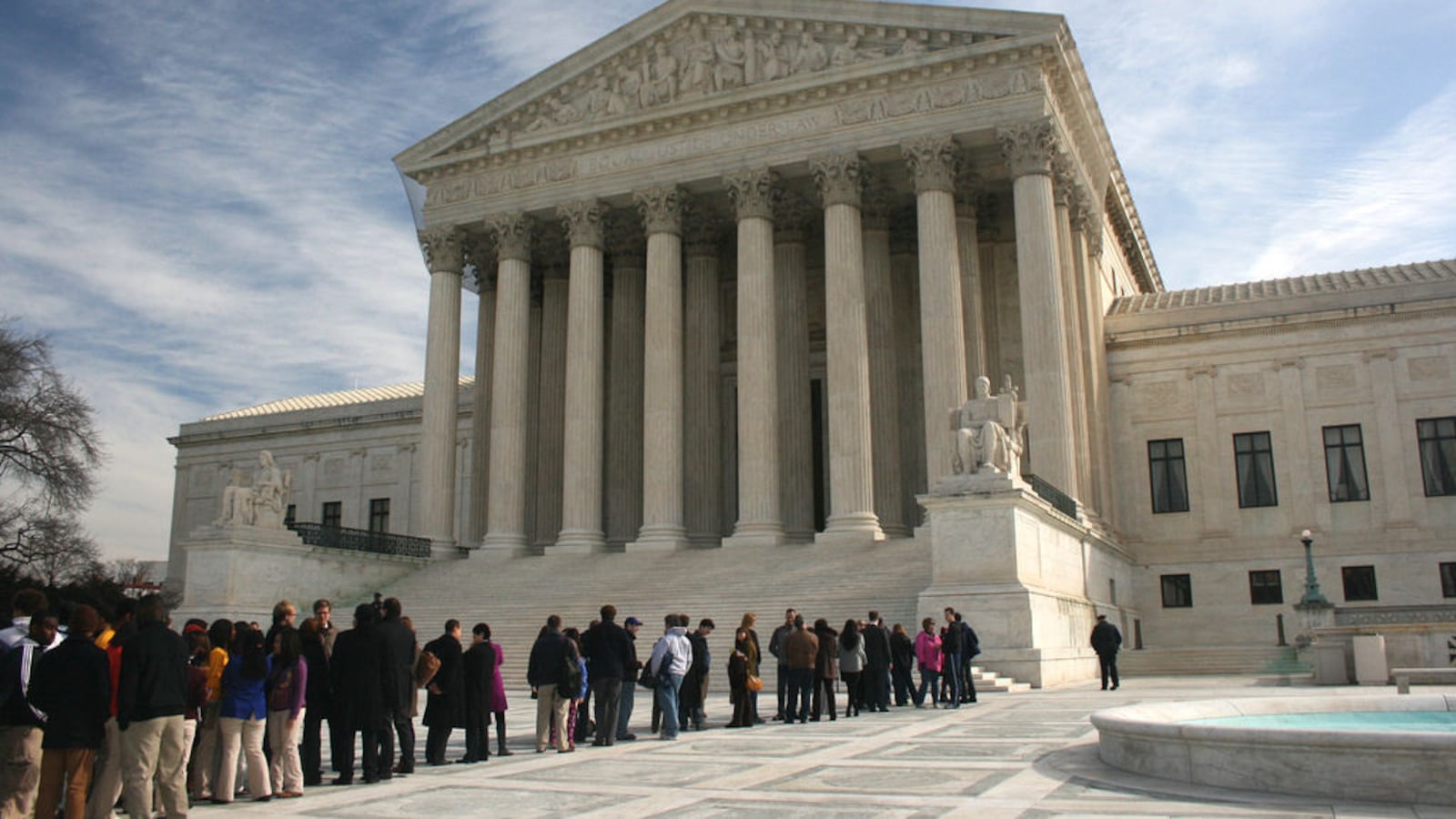
Many so-called education reformers argue that collective bargaining — and unions — are obstacles to real change in education. It’s common to hear assertions about how “restrictive” contracts and “recalcitrant” unions put adult interests over children’s.
The underlying message: if union power were minimized and collective bargaining rights weakened or eliminated, school leaders would be able to enact sweeping changes that could disrupt public education’s status quo.
Those that subscribe to this view are eagerly awaiting the Supreme Court’s decision in the case of Janus v. American Federation of State, County, and Municipal Employees. At issue is the constitutionality of “agency” or “fair share” fees — employee payroll deductions that go to local unions, meant to cover the costs of negotiating and implementing a bargaining agreement.
In states that permit agency fees (there are about 20), a teacher may decline to be part of a union but must still pay those fees. If the Supreme Court rules that those agency fees are unconstitutional, and many teachers do not voluntarily pay, local unions will be deprived of resources needed to negotiate and enforce bargaining agreements.
Based on my experience as an attorney representing school districts in bargaining and contract issues, I have this to say to those hoping the Court will strike down these fees: be careful what you wish for.
Eliminating fair share fees (and trying to weaken unions) represents a misguided assumption about bargaining — that the process weakens school quality. To the contrary, strong relationships with unions, built through negotiations, can help create the conditions for student and school success. Indeed, in my experience, the best superintendents and school boards seized bargaining as an opportunity to advance their agenda, and engaged unions as partners whenever possible.
Why, and how, can this work? For one, the process of negotiations provides a forum for school leaders and teachers to hear one another’s concerns and goals. In my experience, this is most effective in districts that adopt “interest-based bargaining,” which encourages problem-solving as starting point for discussions as opposed to viewing bargaining as a zero-sum game.
Interest-based bargaining begins with both sides listing their major concerns and brainstorming solutions. The touchstone for a solution to be adopted in a bargaining agreement: Is the proposal in the best interests of children? This important question, if embedded in the process, forces both sides to carefully consider their shared mission.
For example, some districts I worked with paid teachers less than comparable neighboring districts did. It would have been unreasonable for unions to insist that their pay be increased enough to even that difference out, because that would mean reducing investments in other items of importance to children, like technology or infrastructure. At the same time, it would have been untenable for management to play “hard ball” and deny the problem, because to do so would likely lead to a disgruntled workforce.
Instead, both sides were forced to “own” the issue and collaboratively craft plausible solutions. That made unions more agreeable to proposals that demonstrated some commitment by the district to addressing the issue of pay, and districts open to other things that they could provide without breaking the budget (like more early release days for professional development).
To be sure, many school administrators could get frustrated with the process of bargaining or having to consult the negotiated agreement when they want to make a change. Some districts would very much like to adopt an extended school day, for example, but they know that they must first consult and negotiate such an idea with the union.
Yet, in districts where school administrators had built a reservoir of goodwill through collective bargaining, disagreement does not come at the cost of operating schools efficiently. Both sides come to recognize that while they inevitably will disagree on some things, they can also seek agreement — and often do on high-stakes matters, like teacher evaluations.
How does this relate to the Supreme Court’s pending decision? Without fees from some teachers, unions may lack the resources to ensure that contract negotiations and enforcement are robust and done well. This could create a vicious cycle: teachers who voluntarily pay fees for bargaining in a post-Janus world, assuming the court rules against the unions, will view such payments as not delivering any return on investment. In turn, they will stop contributing voluntarily, further degrading the quality of the union’s services.
Even more troubling, if fair share fees are prohibited, resentment and internal strife will arise between those who continue to pay the fees and those who refuse. This would undercut a primary benefit of bargaining — labor peace and a sense of shared purpose.
Speaking as a parent, this raises a serious concern: who wants to send their child to a school where there is an undercurrent of bitterness between teachers and administrators that will certainly carry over into the classroom?
It is easy to see the appeal of those opposing agency fees. No one wants to see more money going out of their paycheck. The union-as-bogeyman mentality is pervasive. Moreover, in my experience, some teachers (especially the newer ones) do not recognize the hidden benefits to bargaining contracts.
But, obvious or not, agency fees help promote a stable workplace that allows teachers to concentrate on their primary responsibility: their students. Removing the key ingredient threatens this balance.
Mark Paige is a former school teacher and school law attorney who represented school districts in New England. He is currently an associate professor of public policy at the University of Massachusetts – Dartmouth.
About our First Person series:
First Person is where Chalkbeat features personal essays by educators, students, parents, and others trying to improve public education. Read our submission guidelines here.


